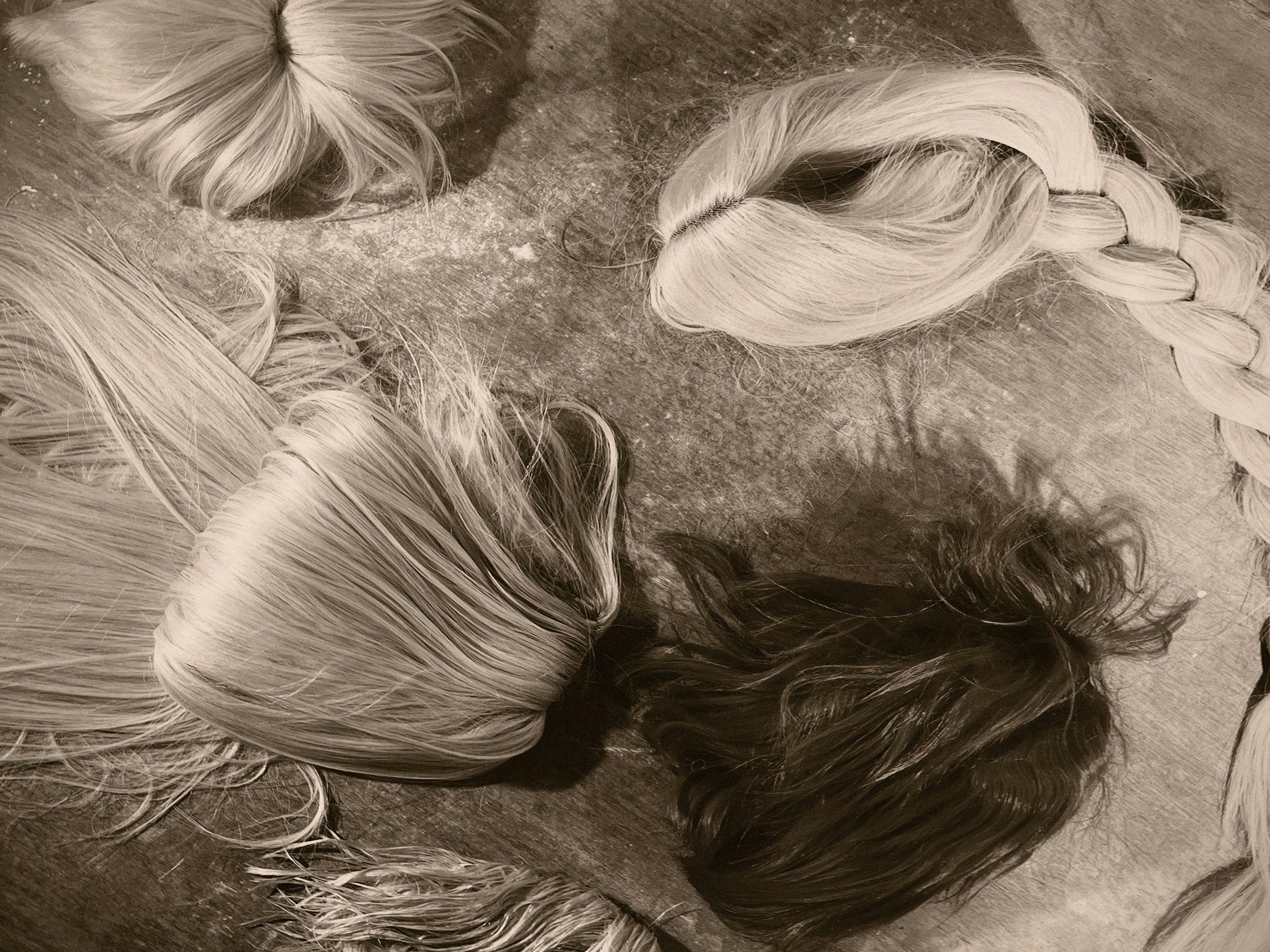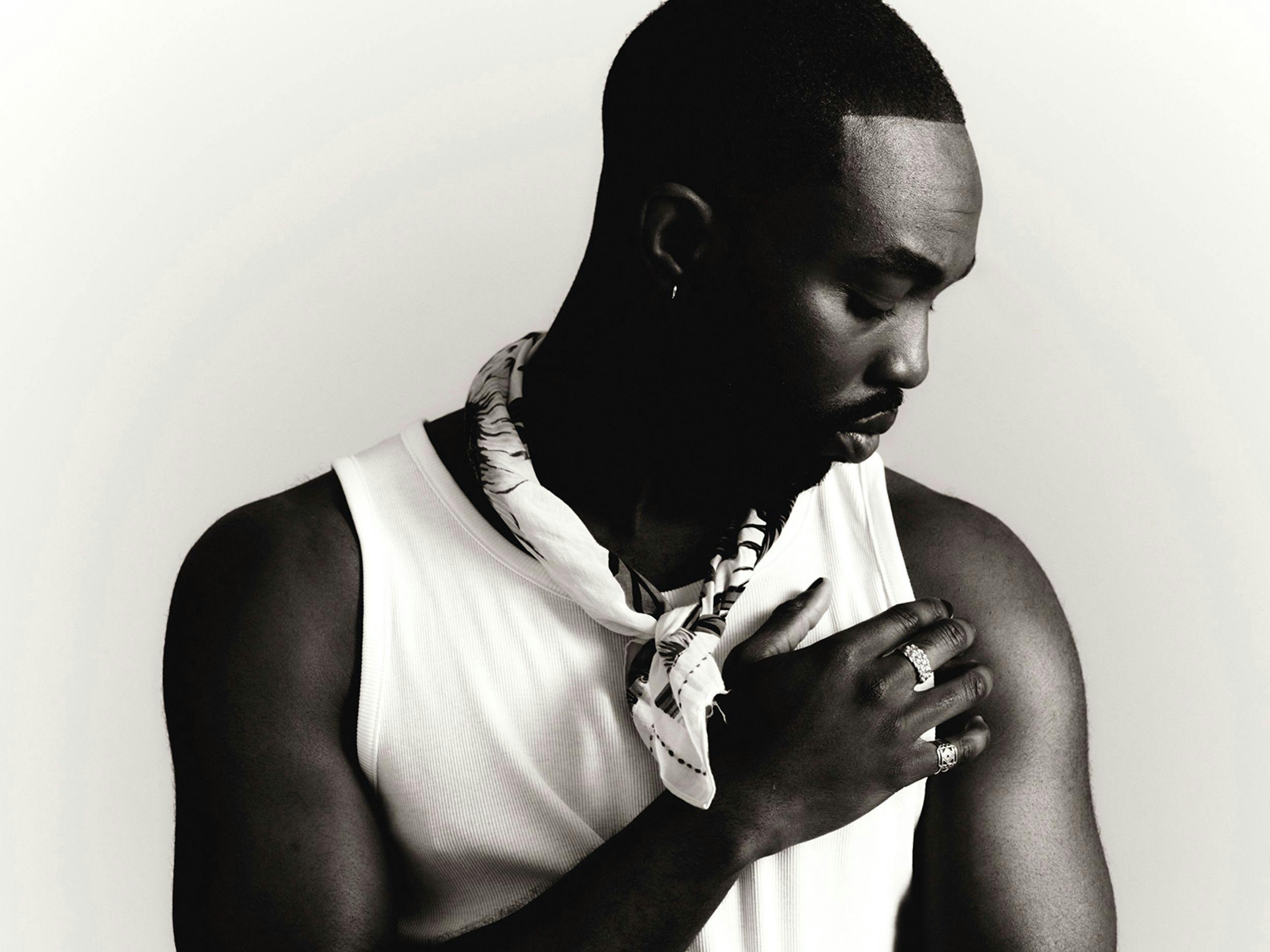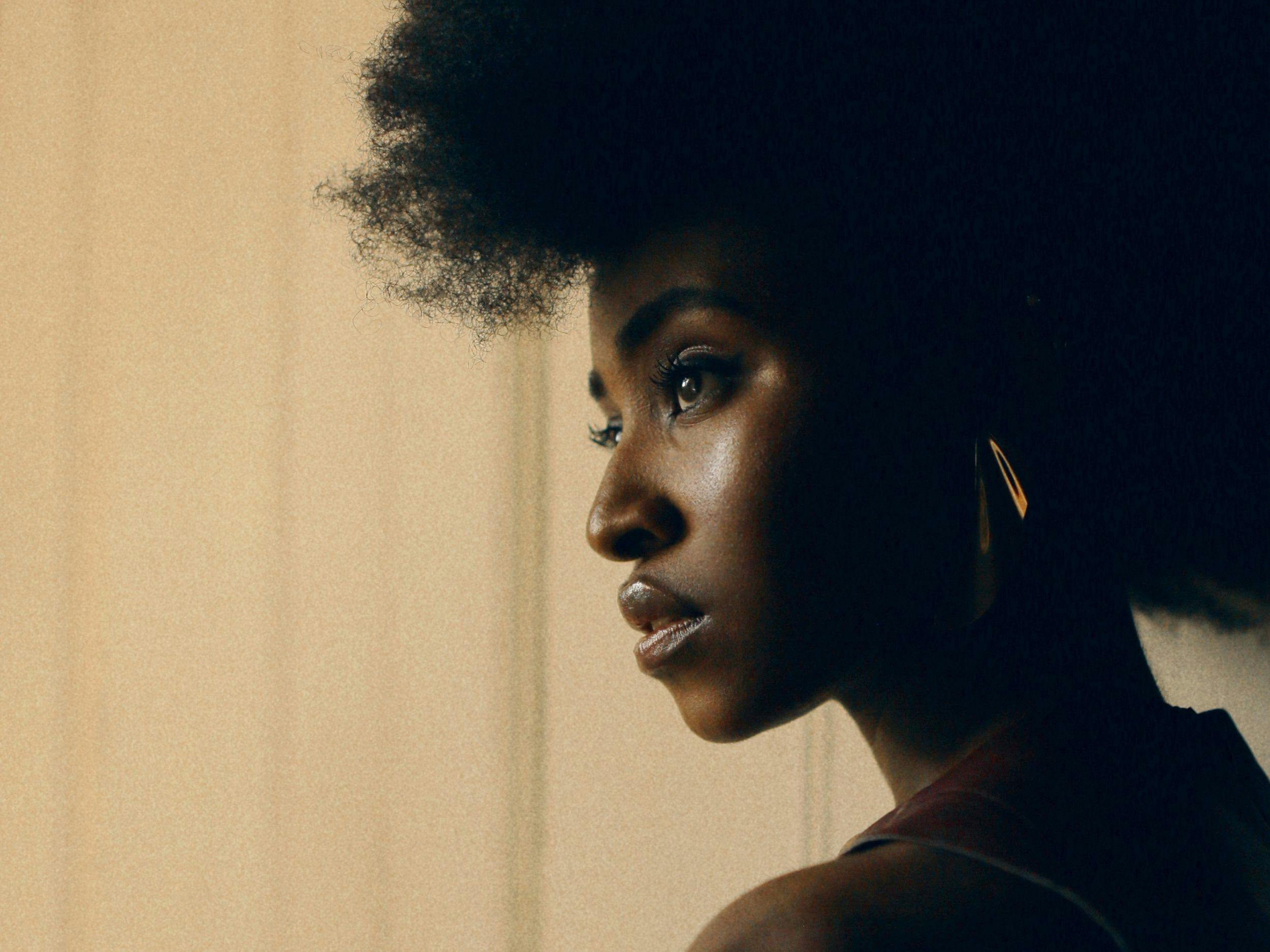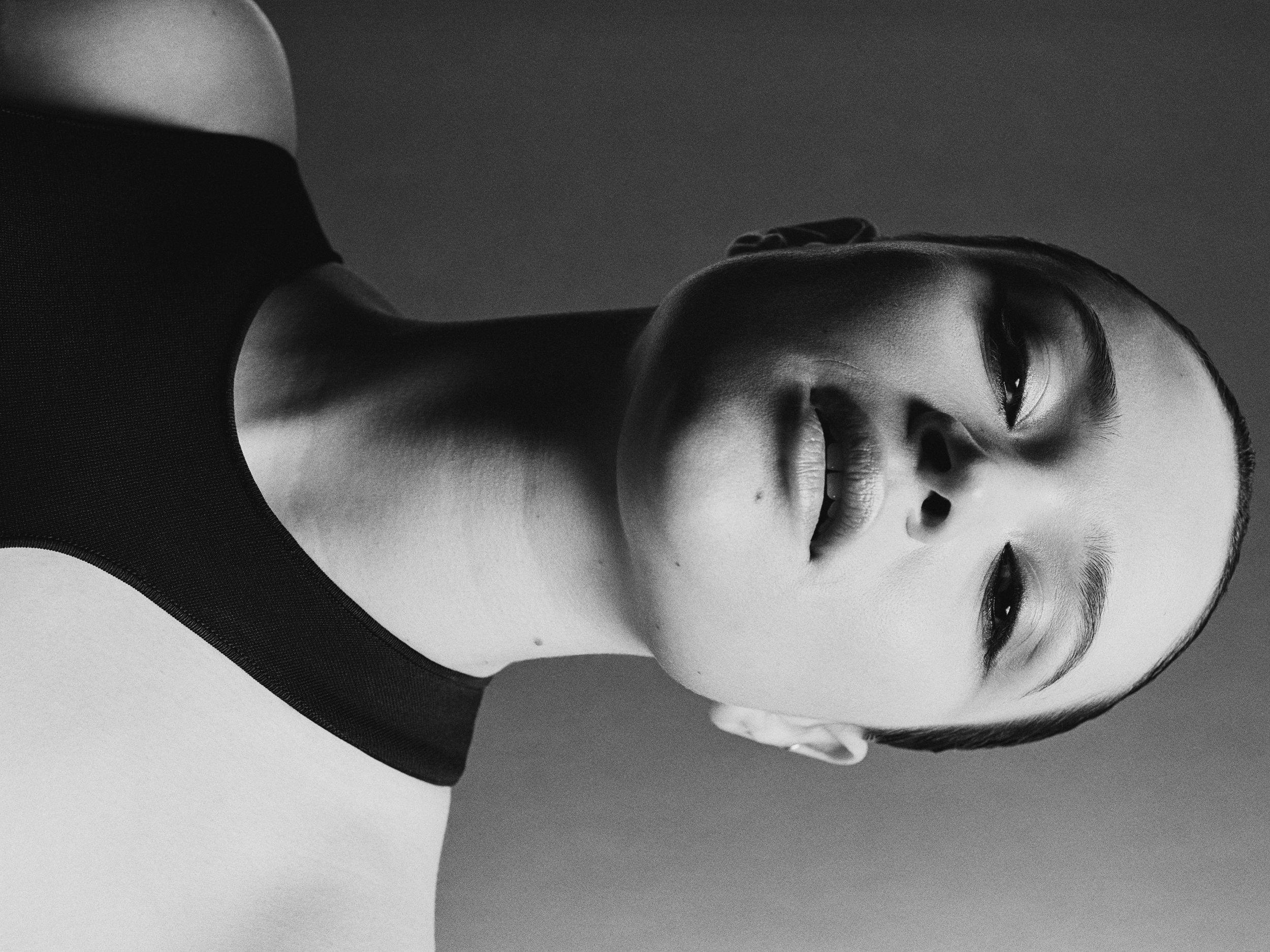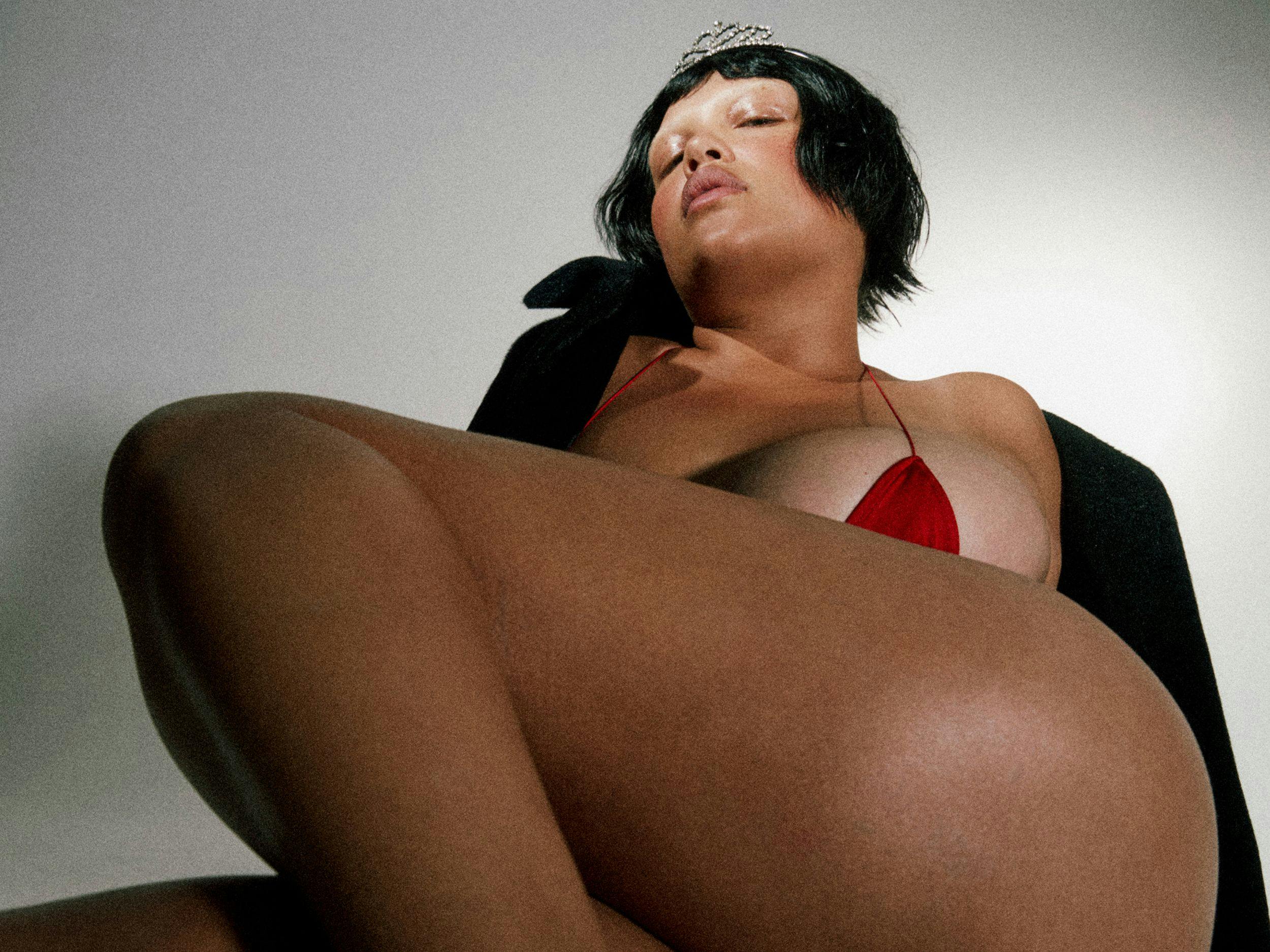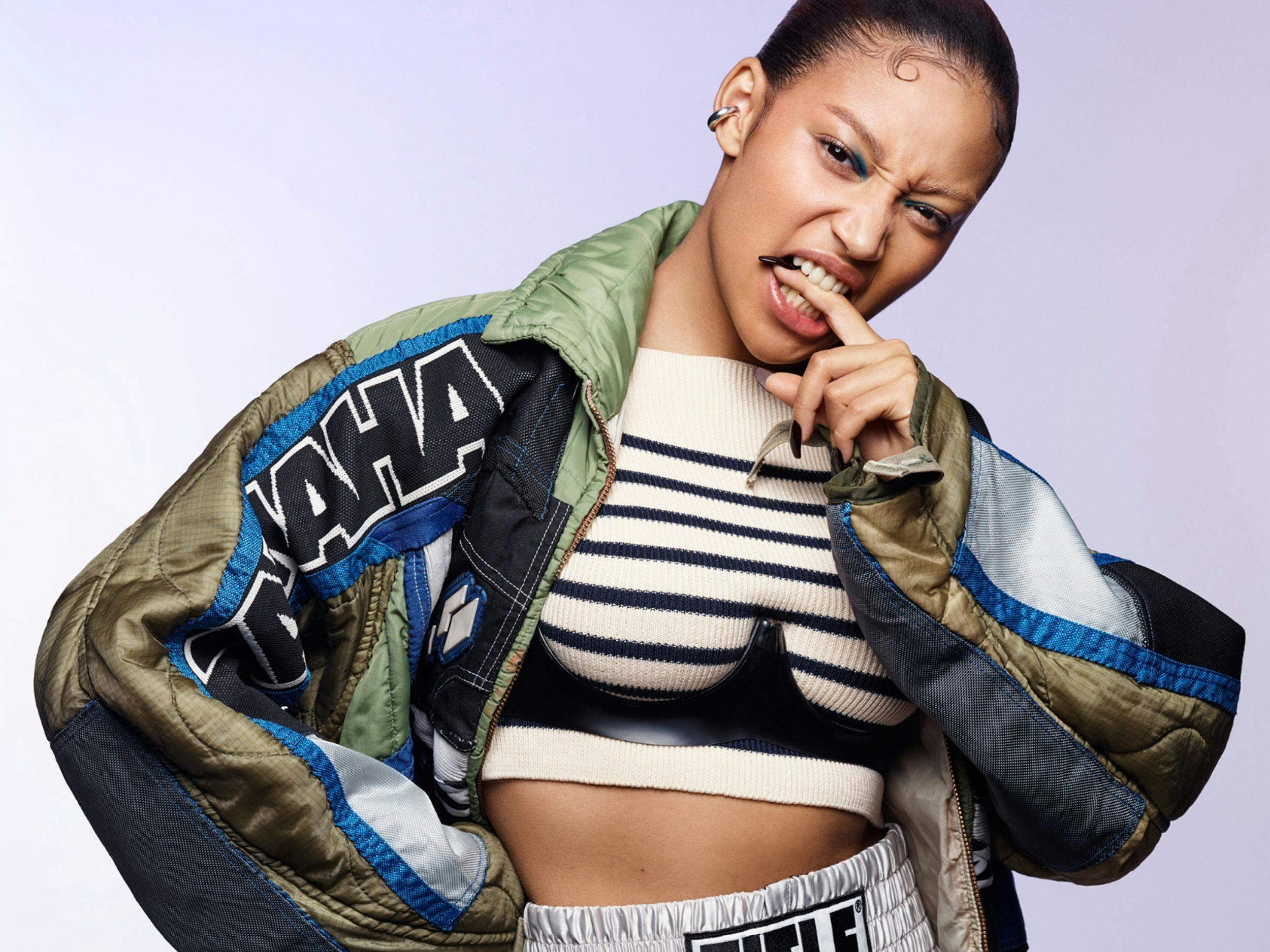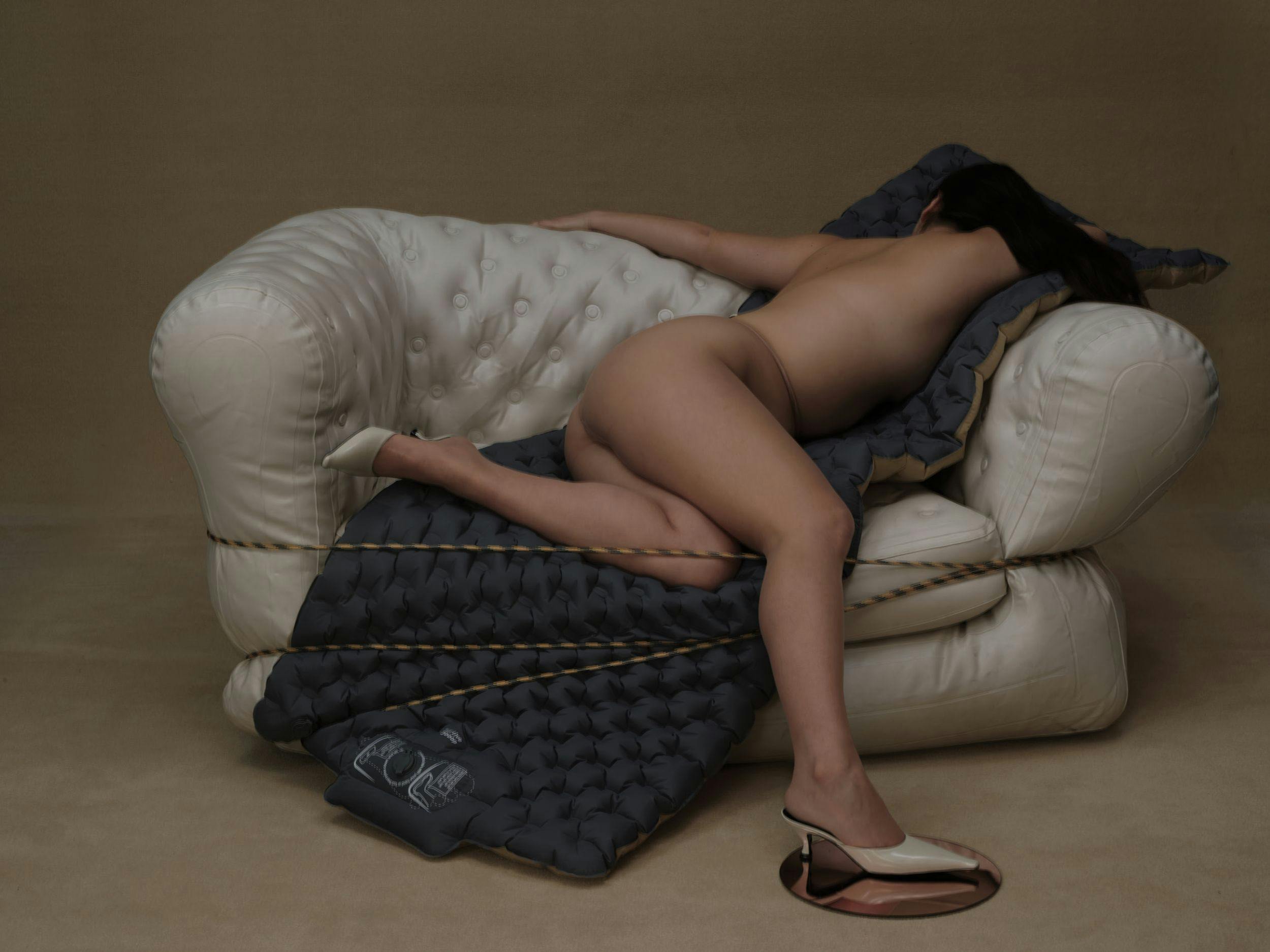
Maia wears DRESS and TIGHTS by Isabel Marant. BRA by Araks. Alex wears TOP by Malcolm D. Costa. PANTS by Coach. SHOES by Yohji Yamamoto.
The Return of Maia and Alex Shibutani
When the ice dancers Maia and Alex Shibutani talk about returning to competition this season, the first thing they do is dismantle the word most people would reach for. “We don’t really like calling this a comeback,” Alex says. “It’s more of a return. We’ve already accomplished great things. We’re doing something new, as the people we are now.” Rather than opt into the language of reclamation, of a hunger to recover something lost, the siblings (who have been competing as a duo since 2004) prefer the language of continuity; their mission is to bring seven years of growth—hardships, creative ventures, pure unadulterated perseverance—to the ice on a global stage.
Their competitive hibernation commenced after the 2018 Pyeongchang Olympics, where they won two historic bronze medals—the pair were the first ice dancing duo of Asian descent to medal at the Games—and endeared themselves to the American public. It looked, to many, as though the siblings were primed for a long era of continued competitive success. But they announced they were taking a break that April, explaining later that the choice was not about exhaustion or burnout but about the need to flesh out their respective lives off the ice. Maia confesses, “I have a deeper bond [with skating] because I spent time away! If I had stayed within the same collective of people and experiences, it would have been hard to change in front of them. Sometimes you just need to go explore. Change is good.”

CATSUIT by Norma Kamali. BRA by Malcolm D. Costa.
The change, when it came, was less an abrupt exit than a gradual widening of perspective. For athletes who had lived within the narrow margins of precision—the cold breath of an arena, the relentless tempo of training—the world beyond competition arrived as both a shock and a reprieve. Alex describes those years as “learning how to be a beginner again.” Without the scaffolding of score sheets or schedules, the siblings began to move through life at a human pace, unmeasured, improvisational. They experimented with art that could not be judged: photography, writing, film. “When you spend your whole life as an expert,” Alex says, “it’s humbling—and freeing—to start from zero.”
Their literary work became the most visible trace of that reinvention. Together, they wrote children’s mysteries and an illustrated history of Asian American and Pacific Islander pioneers—a response to the invisibility they’d felt in skating. “The books were a way for us to connect with kids directly,” Maia explains. “We wanted them to see themselves on the page.” Alex frames the work as a kind of quiet intervention: “In ice dance, there wasn’t a history of people who looked like us. We wanted the next generation to see themselves in the fields they love.” The feedback arrived in waves—letters from parents, teachers, children who saw, maybe for the first time, their own reflection in print. “It felt like we’d created a data point,” Alex says, “proof that these stories matter—and belong.”
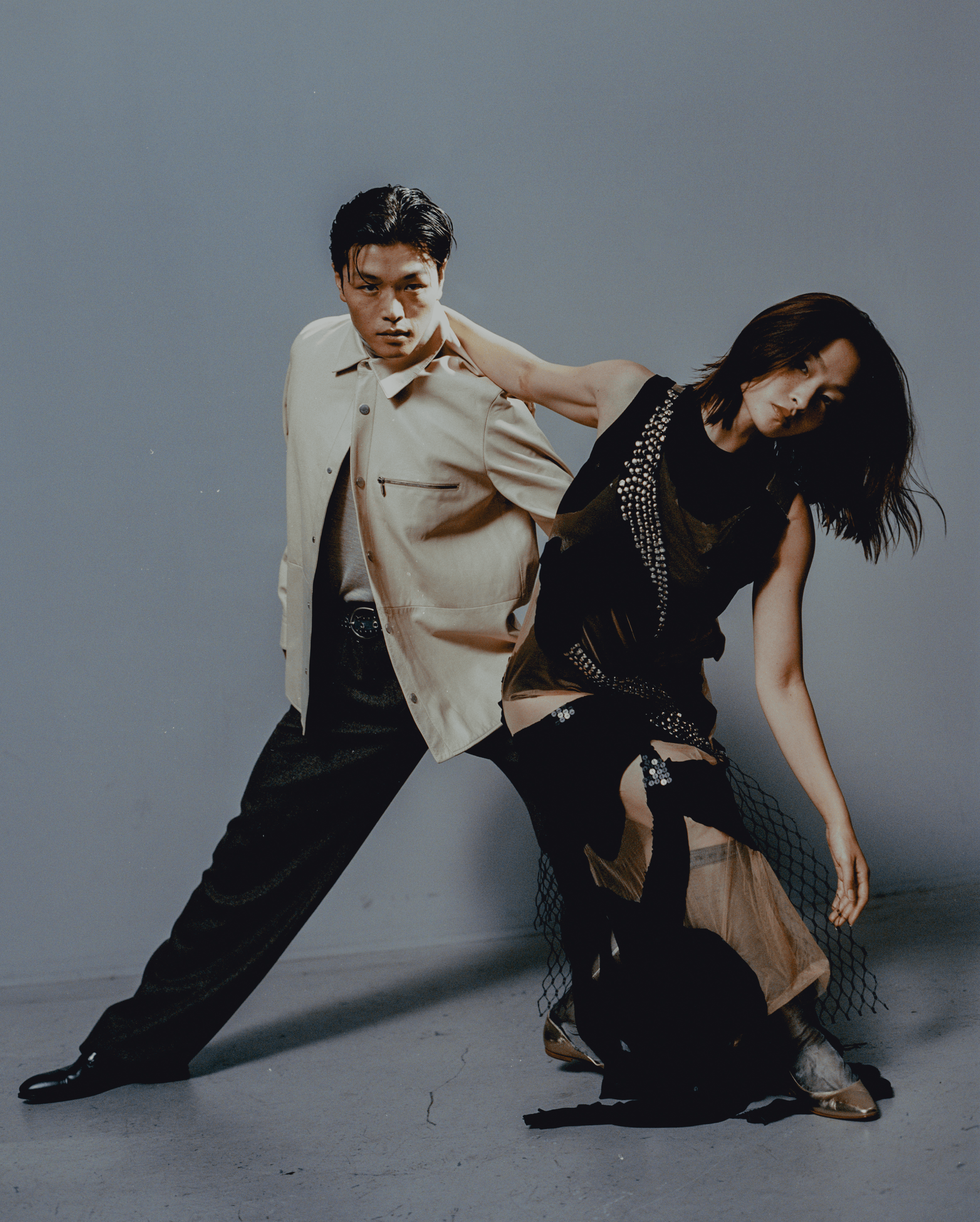
Alex wears all CLOTHING by Hermès. BELT, stylist’s own. SHOES by Louis Vuitton. RING by The Great Frog. Maia wears DRESS by Malcolm D. Costa. TOP by Issey Miyake. SOCKS by Marni. SHOES by Manolo Blahnik.
That idea of belonging, of reframing visibility as a foundation rather than a spotlight, became a throughline in everything they made. During the pandemic, they launched The Shib Show, an online talk series that raised more than forty thousand dollars for protective equipment while connecting artists, athletes, and healthcare workers. They lived for stretches in Tokyo, deepening their connection to their Japanese heritage, and in Los Angeles, where they found a community of Asian American creatives who treated them as collaborators, not prodigies. For the first time, they could exist outside the frame of the rink, yet everything they learned—patience, perspective, the geometry of story—began to find its way back to the ice.
“I’d say our connection to understanding the pace and flow of storytelling was really improved through writing books as well as the practice of editing,” Maia observes. “Specifically for Alex with his photography, that’s really transformed the way we see even just the surface of the ice.” Alex chimes in, “The unique thing about figure skating is the demand of delivering in the moment, only having one shot to do it. It’s similar to photography—capturing and mastering yourself in the moment to deliver something.” Alex, also a member of the Athletes’ Commission for the 2028 Los Angeles Olympics, has had his work featured by Leica and Vogue, and the siblings’ mosaic of skills led them both to be tapped for the inaugural class of Team USA Creators for the 2024 Paris Olympics.
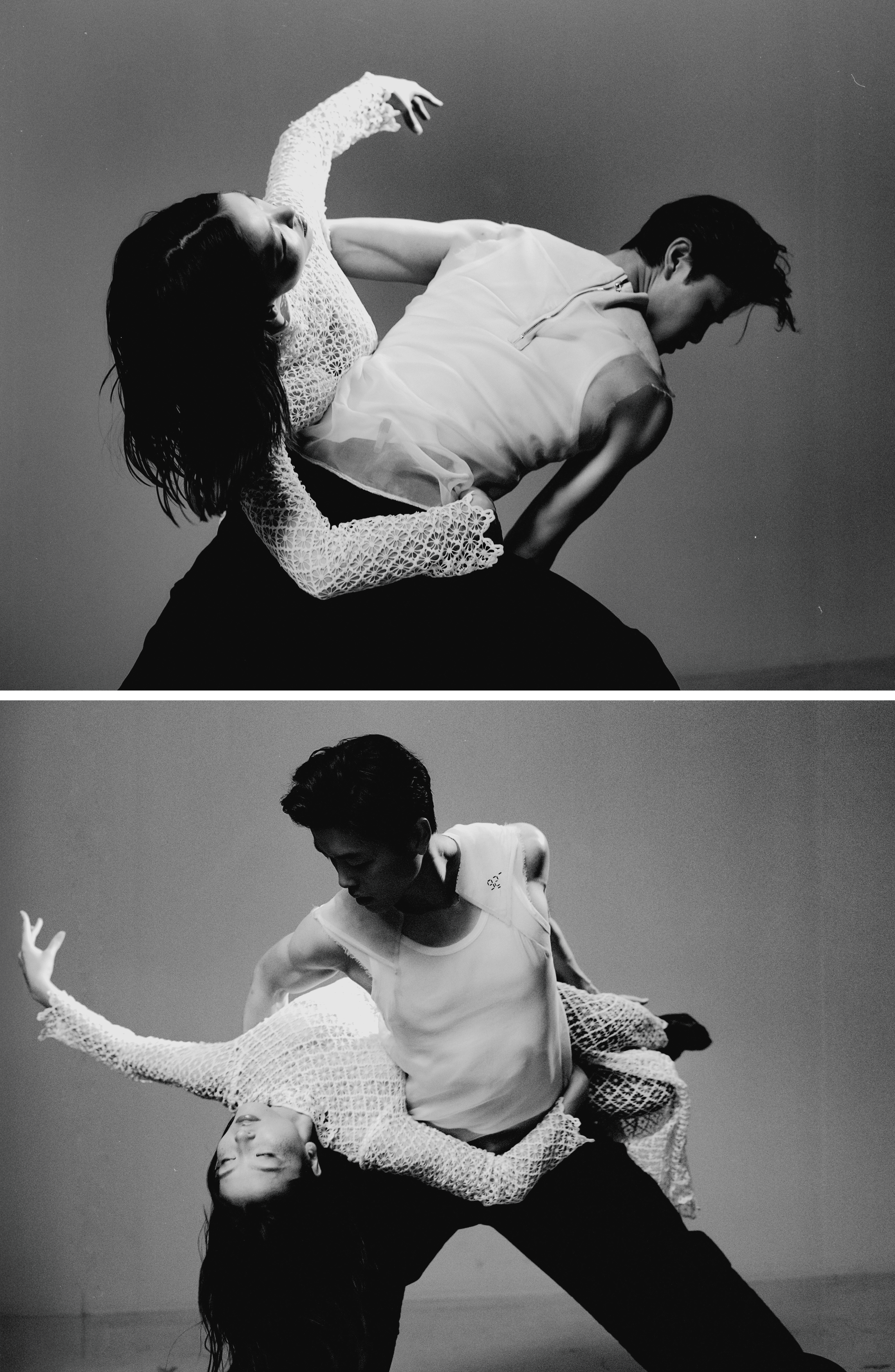
Maia wears DRESS and TIGHTS by Isabel Marant. BRA by Araks. Alex wears TOP by Malcolm D. Costa. PANTS by Coach.
For Maia, the years away brought a different kind of reckoning. In late 2019, she was diagnosed with a malignant tumor in her kidney. Surgery followed, then years of monitoring. “I wish it were completely in the rear view,” she says quietly. “But every time I get good news, I feel grateful. We wouldn’t be doing this if I weren’t healthy.” The illness restructured her relationship to the body on which her profession and livelihood rely. “The ice became a place to rebuild trust,” she explains, “to remember that movement can mean healing, not perfection.”
By the time they decided to return, skating itself had evolved—new rules, new rhythms, younger stars—but the siblings found that the art form still had space for the new artists they had become. “I feel we’ve changed more ways than the sport has. We’re seven years older,” Alex declares, “but more connected to our bodies, and our minds are much stronger.” The urgency that once defined their ambition has softened into something steadier: not a drive to dominate, but a desire to articulate. “Maybe one of the biggest changes,” Alex says, “is realizing we don’t care as much what people think. That’s a huge personal step in a sport that’s judged subjectively.”

Maia wears JUMPSUIT by Yohji Yamamoto. EARRINGS by Nickho Rey. NECKLACE and BRACELET by Saule. Alex wears SHIRT and TIE by Louis Vuitton.
Their advanced maturity reshaped their training and collaborative processes in tandem. With longtime coaches Marina Zueva and Massimo Scali, their dynamic has shifted from obedience to dialogue. “We’ve had conversations with our coaches about the experiences we had back then. Some of those conversations are difficult, but [our coaches] are with us now,” Maia reflects. “I’ve been working with Marina since I was thirteen, and I’m thirty-one now. That’s a relationship in my life I really treasure.” While on hiatus, the Shibutanis both dabbled in choreographic work for younger skaters, allowing them to maintain their skillset while also flipping their roles from mentees to mentors and organically decide to return to competition. “We were back on the ice because we were having fun, because we were loving the choreography and teaching we were doing,” Maia smiles. “It became more and more evident we were feeling our own potential. We didn’t have external expectations or deadlines people were setting for us. We related to [skating] in a more mature and developed way.” Their choreographic and narrative growth has even led the siblings to a foray into the world of theater—this past summer, they contributed special choreography for The Gig: After Moise and the World of Reason, a new show on ice inspired by a Tennessee Williams novel, at the Williamstown Theatre Festival.
Few athletes return to elite competition after seven years away, but the Shibutanis have never followed a linear path. “I really believe that there’s a moment we can meet that’s only possible because of the unique trajectory of our lives and career thus far,“ Maia asserts, looking back on the pair’s unprecedented meteoric rise to the global podium—it only took seven years from their debut at the junior level for the Shibutanis to earn the podium at senior World Championships. At the time of this feat in 2011, they became the youngest team of the modern era to medal at the World Championships—and the first team of color to do so, a milestone that went largely unspoken. “In 2011, there were so many factors,” Maia says. “First North American sweep [and we were the] youngest team to medal at their debut.” By 2018, when they medaled at the Olympics, representation had entered the cultural conversation but remained uneven. Now, in 2025, they understand that their very presence—Asian American, sibling partners, artists who’ve chosen the long route back—is itself a form of commentary.
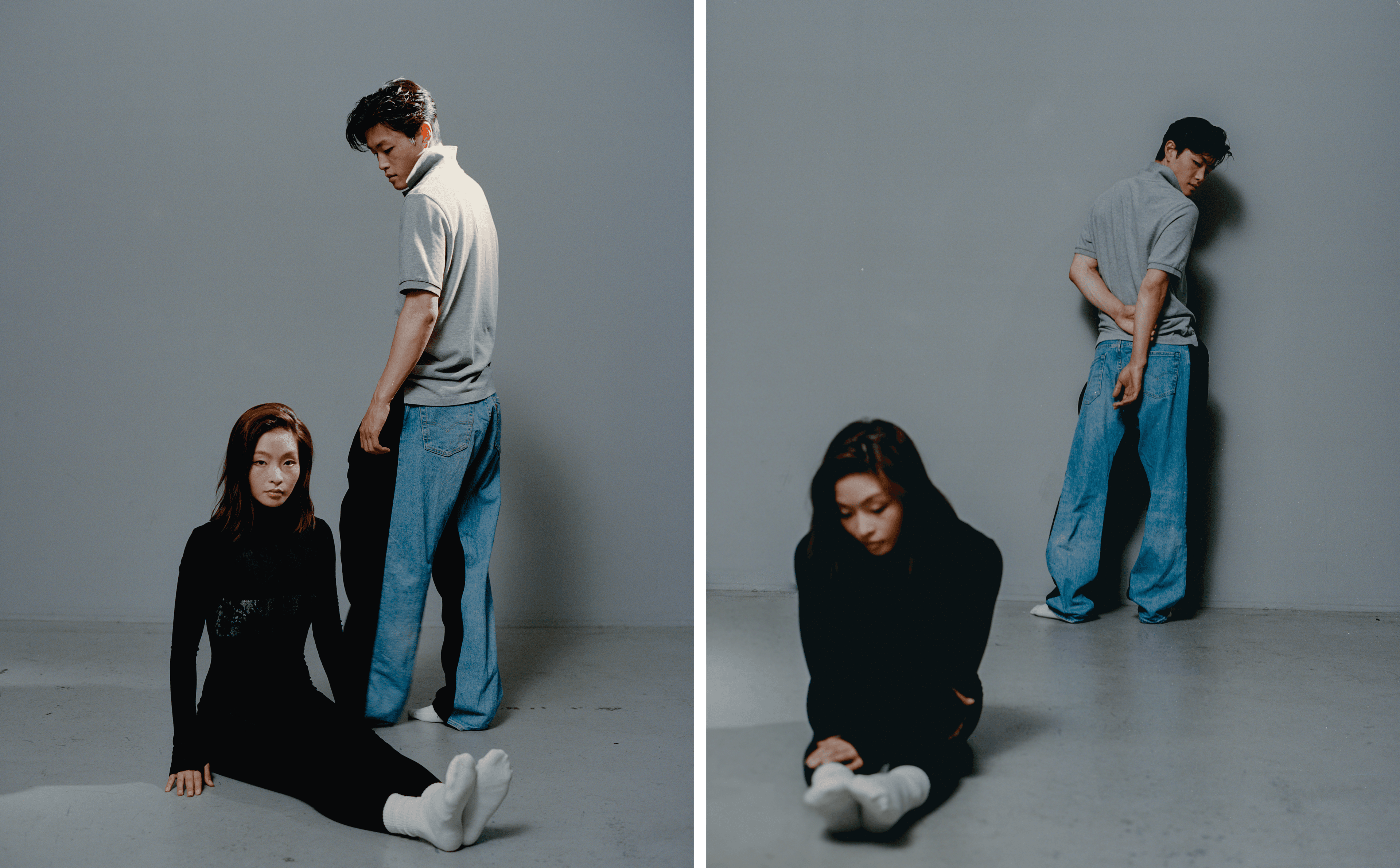
Maia wears CATSUIT by Norma Kamali. BRA by Malcolm D. Costa. Alex wears TOP by Polo Ralph Lauren. PANTS by Bless.
Their understanding of time itself has become cyclical: seven years from their first world medal to their Olympic ones, seven more to their return. “One of our mantras is ‘seven-seven-seven,’” Alex says. “I don’t know if we’ll still be competing after this year, but in seven years, we’ll do something together again. The love will always be there.” That circular thinking defines their programs this season, both in form and feeling.
Their rhythm dance—a mandated nineties theme—channels the era that shaped them. Born in 1991 and 1994, they’ve built a program that fuses American hip-hop with Japanese pop culture, referencing the arcade game Dance Dance Revolution as both memory and metaphor. “We wanted to explore our identity as bridge-builders between Japan and the U.S.,” Alex notes. He grins at the pun he can’t resist: “It’s a bit of an ice dance dance revolution.” The program feels less like nostalgia than recontextualization—a mapping of childhood joy onto adult understanding.

LEFT: Maia wears DRESS and TIGHTS by Isabel Marant. BRA by Araks. Alex wears TOP by Malcolm D. Costa. PANTS by Coach. SHOES by Yohji Yamamoto. RIGHT: Maia wears CATSUIT by Norma Kamali. BRA by Malcolm D. Costa. Alex wears TOP by Polo Ralph Lauren. PANTS by Bless.
Their free dance, by contrast, looks inward and backward in contemplation. They’ve returned to Coldplay’s “Fix You,” which soundtracked their double-silver performance at the 2016 World Championships. “We performed and competed to this song ten years ago,” Alex acknowledges. “It was a very successful program for us—we know that invites comparison. We are intentionally choosing to do things in what we believe is an elevation and evolution of what we did before. Life mirrors art.” In the context of the Shibutanis’ winding, cyclical journey to resurgence, to skate it again is to stage a dialogue across time, between youth and experience, courage and perseverance.
Together, the two programs form a thesis on growth. The rhythm dance looks outward—bridging cultures, decades, and identities. The free dance looks inward—an essay in grace after hardship. Both speak to continuity rather than return, to the idea that artistry matures not in the constant push forward but in the willingness to circle back, to reinterpret, to begin again.
When Maia and Alex step onto the ice this season, they do so not as prodigies retracing old steps but as artists tracing the invisible geometry between what was and what endures. They skate not for reclamation but revelation—the discovery that mastery, at its deepest level, is the art of starting over.
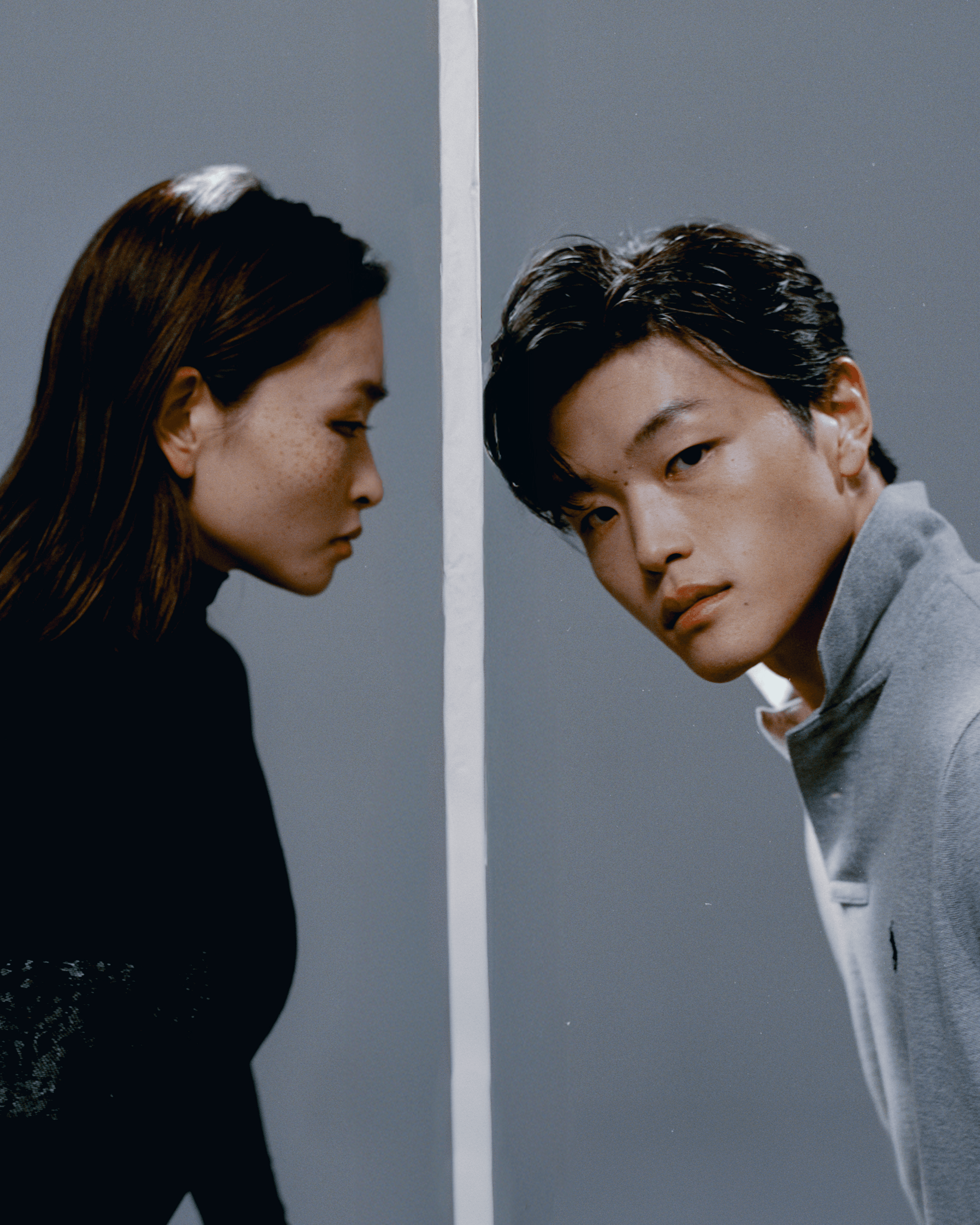
Maia wears CATSUIT by Norma Kamali. BRA by Malcolm D Costa. Alex wears TOP by Polo Ralph Lauren.
As a nonprofit arts and culture publication dedicated to educating, inspiring, and uplifting creatives, Cero Magazine depends on your donations to create stories like these. Please support our work here.
